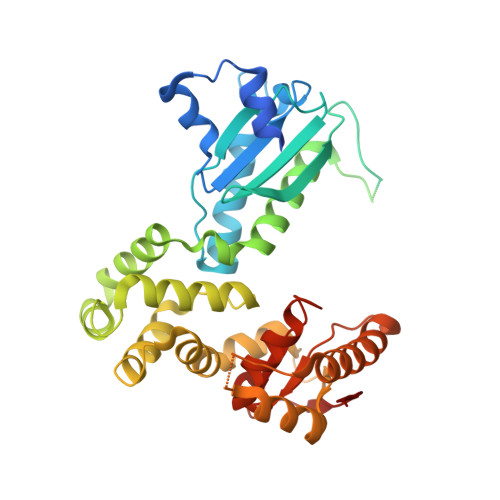FlhA provides the adaptor for coordinated delivery of late flagella building blocks to the type III secretion system.
Bange, G., Kummerer, N., Engel, C., Bozkurt, G., Wild, K., Sinning, I.(2010) Proc Natl Acad Sci U S A 107: 11295-11300
- PubMed: 20534509
- DOI: https://doi.org/10.1073/pnas.1001383107
- Primary Citation of Related Structures:
3MIX - PubMed Abstract:
Flagella are the bacterial organelles of motility and can play important roles in pathogenesis. Flagella biosynthesis requires the coordinated export of huge protein amounts from the cytosol to the nascent flagellar structure at the cell surface and employs a type III secretion system (T3SS). Here we show that the integral membrane protein FlhA from the gram-positive bacterium Bacillus subtilis acts as an adaptor for late export substrates at the T3SS. The major filament protein (flagellin) and the filament-cap protein (FliD) bind to the FlhA cytoplasmic domain (FlhA-C) only in complex with their cognate chaperones (FliS and FliT). To understand the molecular details of these interactions we determined the FlhA-C crystal structure at 2.3 A resolution. FlhA-C consists of an N-terminal linker region, three subdomains with a novel fold, and a disordered region essential for the adaptor function. We show that the export protein FliJ associates with the linker region and modulates the binding properties of FlhA-C. While the interaction of FliD/FliT is enhanced, flagellin/FliS is not affected. FliJ also keeps FliT associated with FlhA-C and excess of FliT inhibits binding of FliD/FliT, suggesting that empty FliT chaperones stay associated with FliJ after export of FliD. Taken together, these results allow to propose a model that explains how the T3SS may switch from the stoichiometric export of FliD to the high-throughput secretion of flagellin.
Organizational Affiliation:
Biochemie-Zentrum der Universität Heidelberg, INF328, 69120 Heidelberg, Germany.














